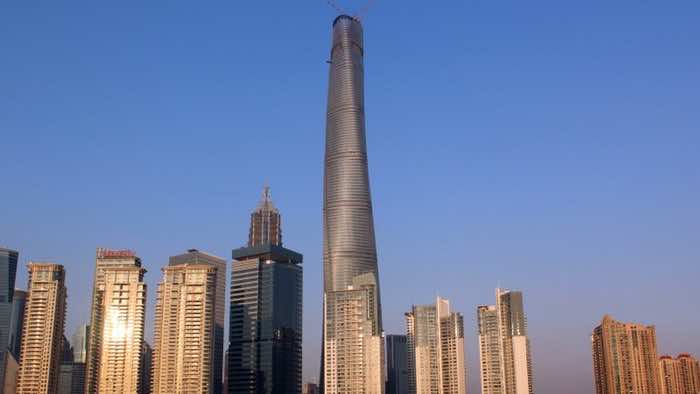Six years, 2.4 billion dollars and an astonishing 632 meters height. This is what you get as the world’s second tallest skyscraper. The Shanghai Tower, as it has been named due to its parent city, uses an intriguing twisting design whose sides undergo 120-degree twist by the time it reaches the top. It is basically meant to reduce the effects of the wind on the whole structure. It is designed for a mixed-use purpose that will see it house corporations, hotels, banquet halls, malls, entertainment areas and much more.
International design firm Gensler was behind the interesting outlook, and it is now officially recognized as the World’s second tallest tower by the Council on Tall Buildings and Urban Habitat. However, it will hold this title for only a few years as the famous Jeddah Tower in Saudi Arabia is set to be completed and Shanghai’s skyscraper will have to settle for third. Nevertheless, it is still one of the tallest buildings around and the sheer difference between the next building on the list is a reminder of how huge this project really is. It has 128 floors and has an ample 420,000 square feet of space available to be used for multi-purposes. There are a 106 Mitsubishi-designed elevators that have a maximum speed of 40 Km/hr if you want to reach the top levels fast enough.
Located in the Chinese Lujiazui Financial Center in Shanghai, it was just a farmland back several years until the government decided to develop it. 1,079 concrete and steel piles were used just in the foundations to be used as supports. It was laid by a whole fleet of trucks that poured concrete for a straight 63 hours. The tapered design of the building resulted in cost reduction of about 58 million $, and it reduces wind loads to manageable levels. It also has a LEED Gold (Green energy-saving design) and is focusing on renewables and energy saving to reduce the enormous power bill. It has a double-layer glass insulation that allows some natural light to permeate through and keep the endless floors well-lit. It has 270 wind turbines to provide the power needed for external lighting. Rainwater from the immense roof is collected and then used in air conditioning and heating systems of the tower.
So. welcome to the club Shanghai Tower!

